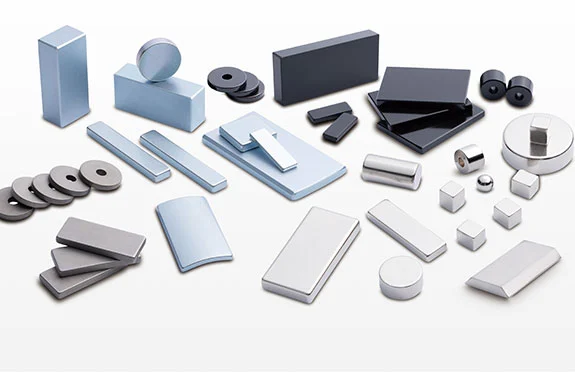Apr 06 , 2024
As a high-performance permanent magnet material, sintered NdFeB magnets play a vital role in modern industry. However, its performance and efficiency are affected by a variety of factors. These influencing factors will be discussed in detail in this paper, with a view to providing a theoretical basis for optimising the preparation process of sintered NdFeB magnets and improving their performance.
The selection and purity of raw materials is the primary factor affecting the performance of sintered NdFeB magnets, in which the purity and ratio of Nd, Fe, B and other major elements are directly related to the magnetic properties of the magnet. High purity raw materials can effectively reduce the interference of impurities on the lattice structure of the magnet and improve the magnetic energy product and coercivity of the magnet. In addition, the addition of appropriate amounts of trace elements such as Dy and Co can also improve the performance of the magnet to a certain extent. Therefore, when preparing sintered NdFeB magnets, the purity and proportion of raw materials should be strictly controlled to ensure the basic performance of the magnets.
Preparation process and sintering temperature are the key factors affecting the performance of sintered NdFeB magnets. During the preparation process, the particle size, shape, distribution and forming density of the powder affect the microstructure and properties of the magnet. On the other hand, the sintering temperature determines the growth rate of magnet grains and the distribution of grain boundary phases. Too high a sintering temperature may lead to oversized grains and reduce the coercivity of the magnet, while too low a sintering temperature may lead to insufficient magnet density and affect the magnetic properties. Therefore, optimising the preparation process and choosing a suitable sintering temperature are important ways to improve the performance of sintered NdFeB magnets.
The grain boundary phase and microstructure are important factors affecting the performance of sintered NdFeB magnets. As a non-magnetic phase in the magnet, the type, quantity and distribution of grain boundary phase have a significant effect on the magnetic properties of the magnet. Suitable grain boundary phases can effectively inhibit the abnormal growth of grains and improve the coercivity and thermal stability of magnets. In addition, the uniformity and denseness of the microstructure are also key factors affecting the magnet performance. Uniform microstructure can ensure the uniform distribution of the magnetic field inside the magnet and improve the magnetic energy product; and dense microstructure can reduce the pores and cracks in the magnet and improve the mechanical properties and corrosion resistance of the magnet.
Heat treatment and post-treatment process is also an important factor affecting the performance and efficiency of sintered NdFeB magnets. Tempering and aging treatment in the heat treatment process can adjust the internal stress and crystal boundary phase structure of the magnet to further improve the magnetic properties and stability of the magnet. On the other hand, post-treatment processes such as surface coating and encapsulation can protect the magnet from oxidation and corrosion and extend its service life. In addition, reasonable heat treatment and post-treatment processes can also improve the production efficiency of magnets and reduce production costs.
In summary, there are many factors affecting the performance and efficiency of sintered NdFeB magnets, including raw material selection and purity, preparation process and sintering temperature, grain boundary phase and microstructure, as well as heat treatment and post-treatment processes. In the actual production process, these factors should be considered comprehensively according to the specific needs and application scenarios, and the preparation process and parameters should be optimised to improve the performance and efficiency of sintered NdFeB magnets. Meanwhile, with the continuous progress of science and technology, it is believed that more innovative technologies and methods will be applied to the preparation of sintered NdFeB magnets in the future, which will further promote the enhancement of its performance and the expansion of its application areas.
Ketian Magnet as a proficient NdFeB magnet supplier is extensively used across diverse sectors globally, including electric vehicles, automotive, household appliances, industrial automation, acoustics, IT products, medical equipment, and wind turbines. Renowned for its reliability, Ketian Magnet's products such as custom neodymium magnets are exported worldwide and are trusted by customers across Europe, America, Asia, and China.
